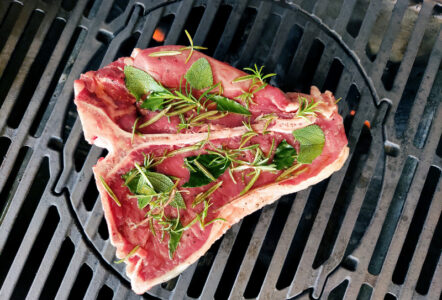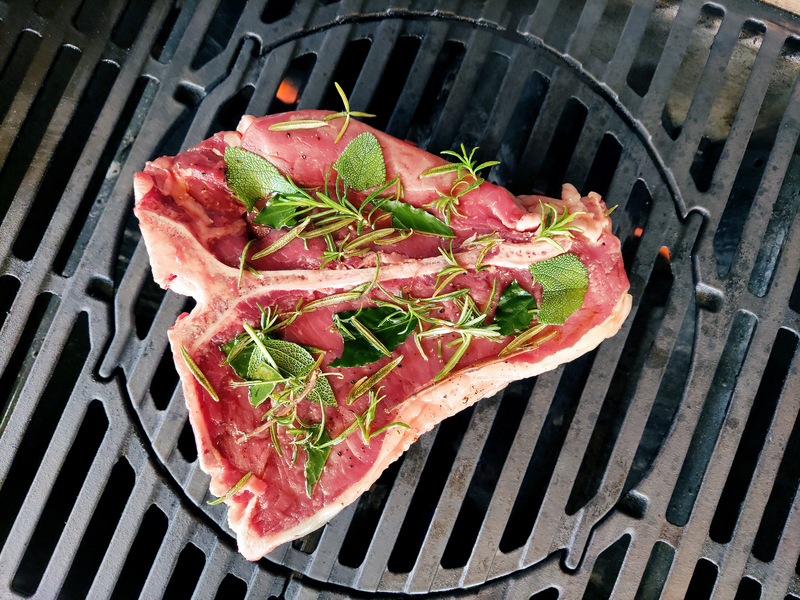 When investing in a grill, the longevity of grill grates is a key consideration.
When investing in a grill, the longevity of grill grates is a key consideration.
Stainless steel and cast iron grates are typically known for their durability and long lifespan.
These materials resist rust and corrosion better than alternatives, making them popular choices among outdoor cooking enthusiasts.
Stainless steel grates offer excellent performance and can withstand high temperatures without warping.
Cast iron grates, while they need more maintenance, provide superior heat retention and create perfect sear marks on food.
It’s important to weigh these characteristics based on personal grilling habits.
Maintaining grill grates correctly can significantly extend their life.
Regular cleaning and appropriate storage are essential practices anyone can adopt.
Choosing the right grate, matched with proper care, ensures a long-lasting grill experience that’s both satisfying and efficient.
Overview of Grill Grate Materials
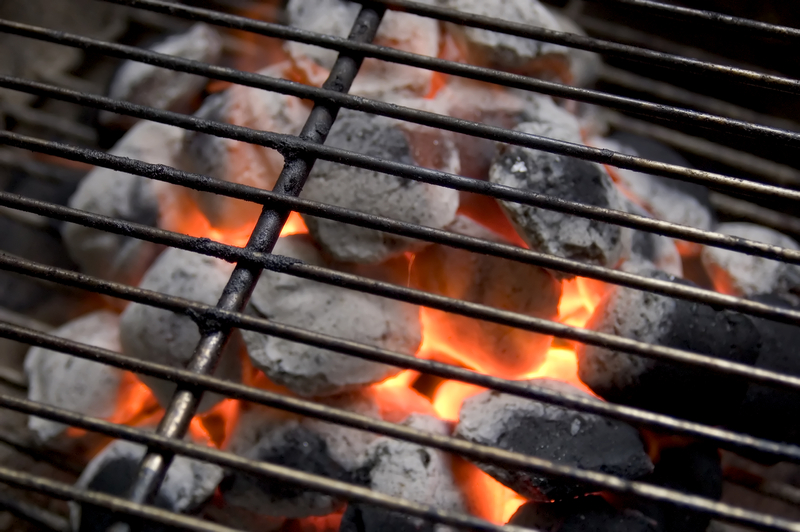
Choosing the right grill grate is essential for durability and performance.
Key materials include cast iron, stainless steel, porcelain-enameled, anodized aluminum, and ceramic.
Each offers distinct benefits and considerations, with variations in heat retention, maintenance, and longevity.
Cast Iron Grates
Cast iron grates are known for excellent heat retention and provide impressive sear marks.
They require regular maintenance to prevent rust, often needing seasoning with oil. Heavy and durable, they are ideal for those who grill frequently and appreciate high-quality results.
Over time, the seasoning process develops a natural non-stick surface.
Careful handling is necessary, as dropping can cause them to crack.
Stainless Steel Grates
Stainless steel grates offer durability and are resistant to rust and corrosion.
They are easy to clean and maintain, often requiring only soapy water.
Heat retention might be lower than cast iron, yet stainless steel is lightweight and quick to heat.
This material is favorable for users seeking longevity combined with low maintenance while providing a consistent cooking surface.
Porcelain-Enameled Grates
Porcelain-enameled grates provide a non-stick surface and are resistant to rust.
The porcelain coating allows for easy cleanup, though care is needed to prevent chipping.
If the coating chips, it leaves the metal underneath susceptible to rust.
Even heat distribution makes these grates a practical choice for casual grill enthusiasts who prefer minimal upkeep and hassle-free cooking.
Anodized Aluminum Grates
Anodized aluminum grates are lightweight and resistant to rust.
This material heats up quickly and distributes heat evenly across the surface.
Easy maintenance is a significant advantage, requiring simple cleaning without special treatments.
While not as durable as heavier materials, anodized aluminum appeals to those who prioritize speed and simplicity over longevity.
Ceramic Grates
Ceramic grates excel in holding and distributing heat effectively.
They offer a smooth, non-stick surface and are not prone to rust.
While ceramic is fragile and can crack under sudden temperature changes, its performance in providing consistent cooking is noteworthy.
Perfect for those seeking a blend of modern technology and traditional grilling results, ceramic grates add versatility to any grilling setup.
Factors Affecting Grill Grate Durability
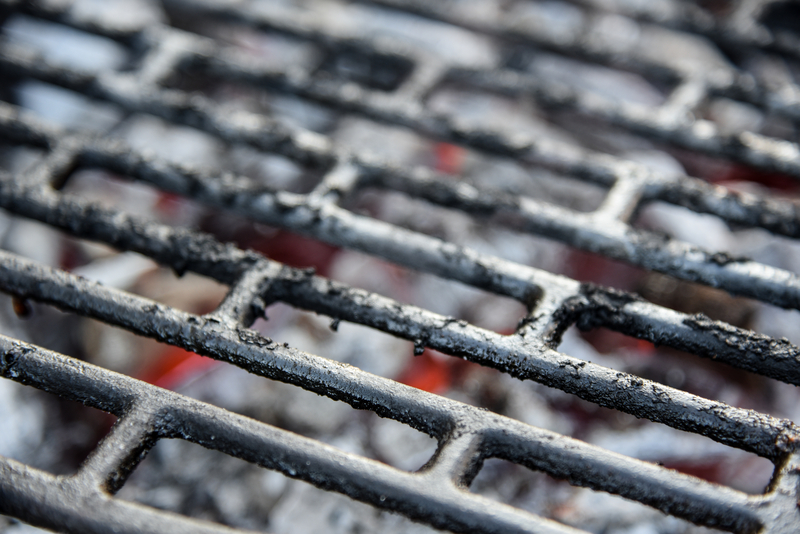
Grill grate durability is determined by several critical factors, including the materials used, design specifications, and care practices.
Selecting the right combination of these factors ensures long-lasting grates.
Material Composition
The material from which a grill grate is made is a primary determinant of its longevity. Stainless steel and cast iron are popular choices.
Stainless steel offers rust resistance and longevity, whereas cast iron excels in heat retention and distribution.
The type of material dictates how well the grate withstands intense heat and environmental exposure.
Porcelain-coated options provide protection against rust but need careful handling to prevent chipping.
Material choice should factor in the grilling frequency and maintenance willingness.
Thickness and Design
Thickness contributes directly to a grate’s durability.
Thicker grates hold up better against high temperatures and physical stress.
Thick cast iron grates, for example, offer excellent heat retention and resilience.
Design elements, such as the spacing of bars or the presence of reinforcing supports, can influence durability.
Narrow spaces between bars may improve heat distribution but require additional cleaning effort.
Selecting a design with optimal thickness balances longevity and functionality.
Coating and Finish
The type of coating or finish on a grill grate can extend its life by preventing corrosion and wear.
Porcelain enamel is frequently used to protect metal surfaces from rust and wear.
It creates a smooth surface that’s easier to clean and less likely to corrode.
Chrome and nickel finishes add a layer of protection, enhancing durability.
The effectiveness of any coating or finish depends on maintaining the integrity of the layer.
Chips or cracks expose the underlying metal to potential damage.
Maintenance and Cleaning
Routine maintenance and proper cleaning greatly influence a grill grate’s lifespan.
Regular cleaning removes food particles and prevents rust buildup.
Using non-abrasive materials for cleaning minimizes the risk of scratching the surfaces.
Applying oil after cleaning creates a protective barrier against moisture and rust.
Simple, consistent maintenance practices ensure that the grates remain functional for extended periods.
Exposure to Elements
Grill grates exposed to harsh environmental elements, such as rain and humidity, tend to degrade faster.
Keeping a grill covered when not in use reduces exposure to moisture and other damaging weather conditions.
Stainless steel grates are inherently more weather-resistant, making them suitable for outdoor use.
Understanding how different materials respond to environmental factors assists in choosing grates that will endure.
Proper storage practices play a critical role in maintaining durability.
Performance and Cooking Experience
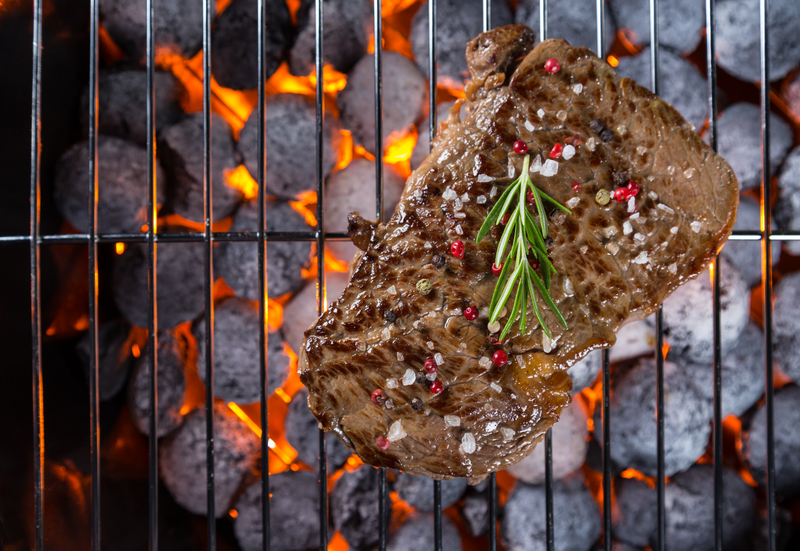
Different grill grates provide varied heat distribution, ease of food release, and quality of grill marks and searing.
These factors significantly influence the overall cooking experience.
Heat Distribution
Grill grates made of cast iron are known for excellent heat retention.
They distribute heat evenly, allowing for consistent cooking.
These grates are favored for searing due to their ability to retain and transfer heat efficiently.
Stainless steel grates can provide uniform heat distribution, depending on their thickness.
Thin stainless steel grates may show variations in heat but are effective for lower-temperature cooking.
Porcelain-coated grates offer a balance, retaining heat well while resisting rust and corrosion.
Food Release Properties
Ease of food release is important to avoid sticking and maintain food appearance.
Porcelain-coated grates are often praised for their non-stick surface, making them ideal for delicate foods like fish.
Stainless steel grates perform well with a bit of oil or cooking spray.
It helps prevent sticking when cooking items like chicken or beef.
Cast iron can be seasoned to provide a reasonably non-stick surface, enhancing food release properties over time.
Grill Marks and Searing
Creating distinct grill marks often ties back to the material and design of the grates.
Cast iron excels in achieving deep, well-defined grill marks due to its heat retention capabilities.
Stainless steel grates can also produce good grill marks, especially when preheated adequately.
Porcelain-coated grates might not provide the same level of grill marks due to the coating but offer an excellent surface for even browning and cooking.
All types of grates offer advantages depending on cooking preferences and needs.
Each material and design serves a unique purpose in enhancing the cooking experience.
User Considerations and Preferences
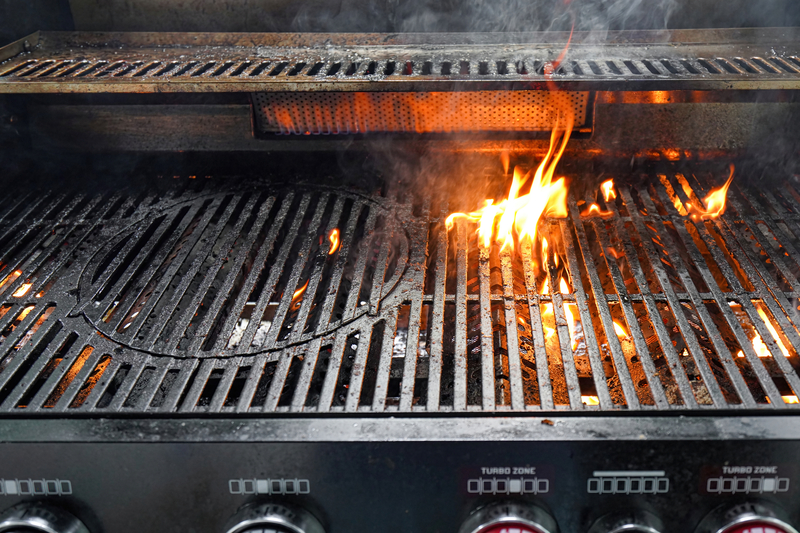
When selecting grill grates, individuals assess ease of maintenance, budget, cost-effectiveness, and compatibility with their cooking styles.
Different materials offer varying benefits that cater to these preferences.
Ease of Maintenance
Grill grates come in several materials, such as stainless steel, cast iron, and porcelain-coated options, each with unique maintenance needs.
Stainless steel grates are often preferred for their resilience to rust and ease of cleaning.
Cast iron grates, while offering excellent heat retention, require regular seasoning to prevent rust.
Porcelain-coated grates provide a non-stick surface but can chip, exposing the underlying metal.
Users prioritizing low-maintenance options may lean towards stainless steel grids due to their ease of upkeep.
Regular cleaning and proper storage help extend the life of grill grates, regardless of material type.
Assessing time availability and willingness to perform upkeep is crucial in choosing the right material.
Budget and Cost-Effectiveness
The cost of grill grates can widely vary, with material and brand influencing price.
Stainless steel grates typically occupy the higher end of the spectrum, offering durability that justifies their price.
Cast iron grates are often more affordable yet require ongoing maintenance to ensure longevity.
Porcelain-coated grates offer a balance between cost and maintenance requirements.
While initial costs might be lower, the coating’s potential to chip can incur additional replacement costs.
Consumers need to weigh immediate financial constraints against the long-term value and durability of the grill grates.
Cooking Style Compatibility
Each type of grill grate aligns with particular cooking methods and preferences.
For example, cast iron grates are favored by those prioritizing high heat and sear marks, given their ability to retain heat effectively.
Stainless steel grates, with a quicker heat response, suit those who frequently change grilling temperatures.
Porcelain-coated grates are ideal for individuals who desire even cooking and ease of use, given their non-stick properties.
Understanding how different grill grates interact with various cooking proteins and techniques is crucial for making an informed decision that enhances the grilling experience.
Users should select grates compatible with their typical grilling practices to achieve optimal results.
Environmental and Health Considerations
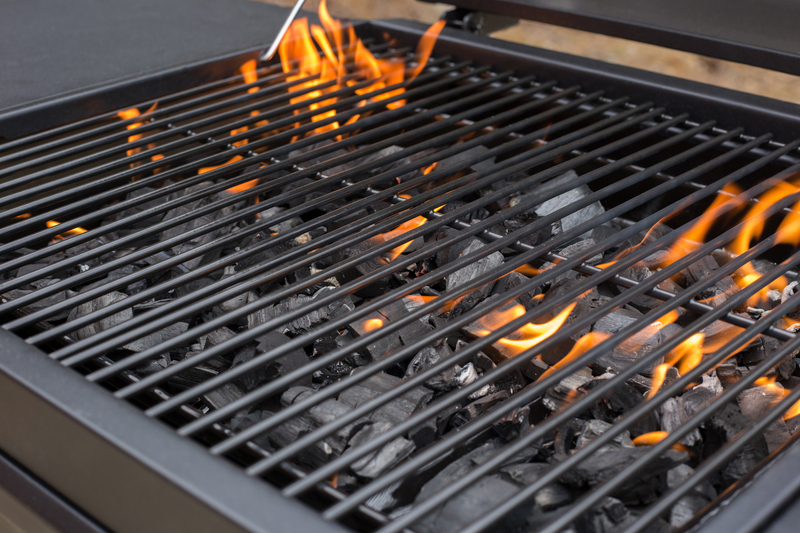
When selecting grill grates, it’s critical to consider their impact on the environment and health.
Stainless steel is a popular choice due to its durability and non-toxic properties. It does not emit harmful chemicals when heated, making it a safer option for grilling.
Cast iron grates, while providing excellent heat retention, can rust without proper maintenance.
This rust can potentially flake into food if not well maintained. Regular seasoning with oil can help prevent this issue and maintain the grates’ integrity.
Aluminum grill grates are lightweight and resistant to corrosion.
However, they might not withstand high temperatures over time, which can lead to warping.
Users should ensure they are using high-quality aluminum to minimize health risks associated with metal leaching at high temperatures.
Ceramic-coated grates offer a non-stick surface, reducing the need for additional oils or sprays.
This can help reduce the intake of unnecessary additives in food.
However, care must be taken not to scratch the coating, as chipped ceramic can also pose ingestion hazards.
For those prioritizing environmentally friendly options, eco-friendly alternatives such as bamboo grilling mats provide a biodegradable choice, though they might not offer the same durability or heat distribution as metal grates.
Being informed about the materials and their potential effects aids in making safer and more environmentally conscious grilling choices.
Popular Brands and Market Options
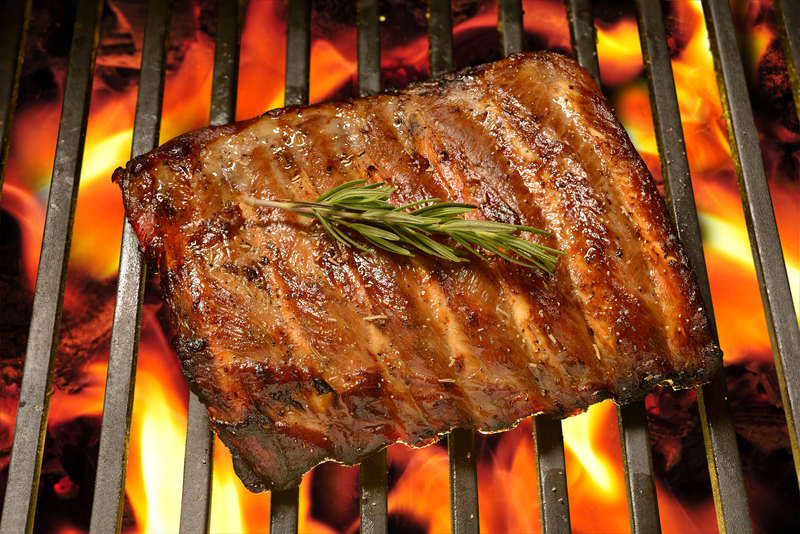
When considering long-lasting grill grates, several brands stand out in the market.
Weber is well-known for its durable stainless steel and porcelain-enameled cast iron grates, a choice favored by many grill enthusiasts.
Char-Broil offers affordable grates made from stainless steel and cast iron, catering to both casual grillers and dedicated barbecue fans.
These options provide a balance of durability and ease of maintenance.
Nexgrill, another notable brand, provides options that are often more accessible in terms of price without sacrificing quality.
Their porcelain-coated cast iron grates are particularly popular for their rust-resistant properties.
For premium options, Napoleon offers stainless steel grill grates that are crafted for resilience and feature a design that supports even cooking.
These grates are perfect for individuals looking for a high-performance grilling experience.
In comparing materials, stainless steel grates usually resist rust better, while cast iron grates excel in heat retention.
The choice between these often comes down to personal preference and grilling habits.
Grill owners should consider brands that match their specific needs, focusing on the material, price, and cooking style they prefer.
Taking time to research these options ensures an informed decision regarding long-term investment in grill grates.
Tips for Extending the Life of Grill Grates
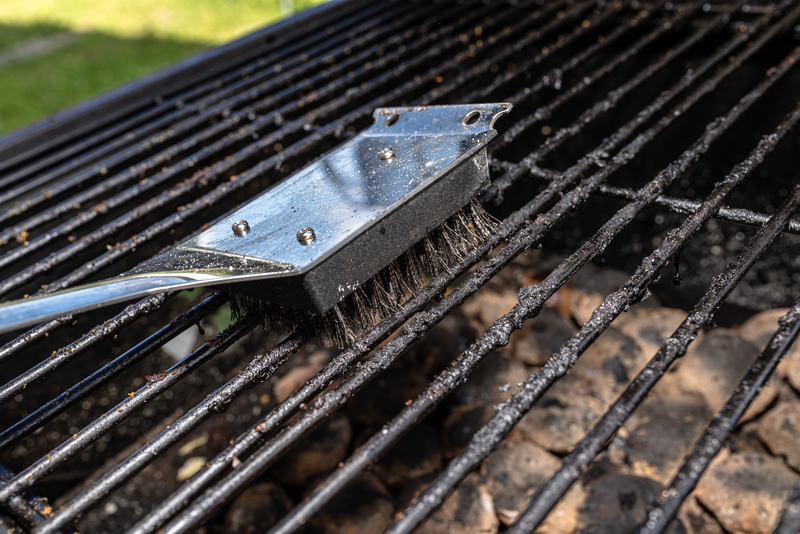
Keeping grill grates in top condition ensures longevity and consistent performance.
Start by cleaning grates after each use.
 A stiff wire brush works well for removing food particles and debris.
A stiff wire brush works well for removing food particles and debris.
Regularly oiling grates helps prevent rust and can make cleaning easier.
Apply a thin layer of vegetable oil on cooled grates before preheating the grill.
This practice not only extends the life of the grates but also enhances performance by making them non-stick.
Storage matters too. During harsh weather, cover or store grates in a dry place.
Moisture leads to rust, reducing their lifespan. Investing in a high-quality grill cover provides year-round protection.
Material matters: Stainless steel and porcelain-coated grates resist rust better than cast iron, yet all require maintenance.
Be attentive to chips or cracks that might expose metals underneath to external elements.
A simple hacksaw or rotary tool can help remove stubborn rust spots on metal grates.
It’s important to handle repairs quickly to prevent further spreading.
Repainting with heat-resistant spray paint can offer additional protection from rust.
Avoid using harsh chemicals for cleaning.
They can cause damage over time.
Opt for mild, soapy water instead. Regular inspections ensure early detection of potential problems.
Addressing these promptly can significantly prolong the service of your grill grates.
Bottom Line – Which Grill Grates Last the Longest?
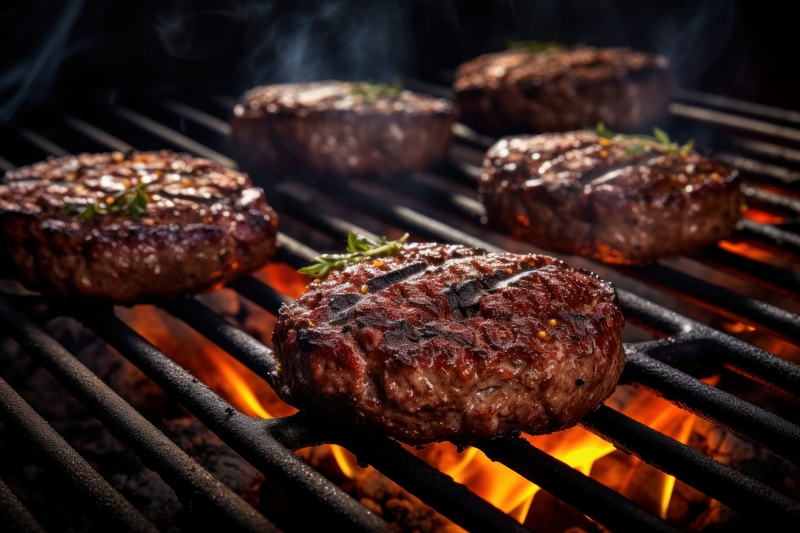
When considering grill grates that stand the test of time, stainless steel and cast iron are prominent contenders.
Both materials offer notable durability and heat retention, ensuring a satisfactory grilling experience.
Stainless steel grates are preferred for their resistance to rust and corrosion.
With proper care, they maintain their appearance and functionality over numerous grilling seasons.
Their ease of cleaning and low maintenance needs make them a favored choice for many.
On the other hand, cast iron grates provide superior heat retention, which is crucial for achieving those well-defined grill marks.
These grates need regular seasoning to maintain their protective layer.
When treated with care, they offer unparalleled performance.
Porcelain-coated grates provide a balance between cast iron’s heat retention and stainless steel’s ease of use.
The coating helps to prevent rust, though it requires careful handling to avoid chipping.
Price and personal preference should guide the choice between these options.
While one might prioritize ease of maintenance, another might value heat performance more.
Frequent grillers may prefer the heat retention qualities of cast iron, while occasional users might lean towards the simplicity of stainless steel.
Each choice offers distinct advantages based on user needs and grilling habits.
Selecting a grill grate involves assessing factors like longevity, maintenance, and grilling needs.
By weighing these considerations, grillers can make an informed decision.

